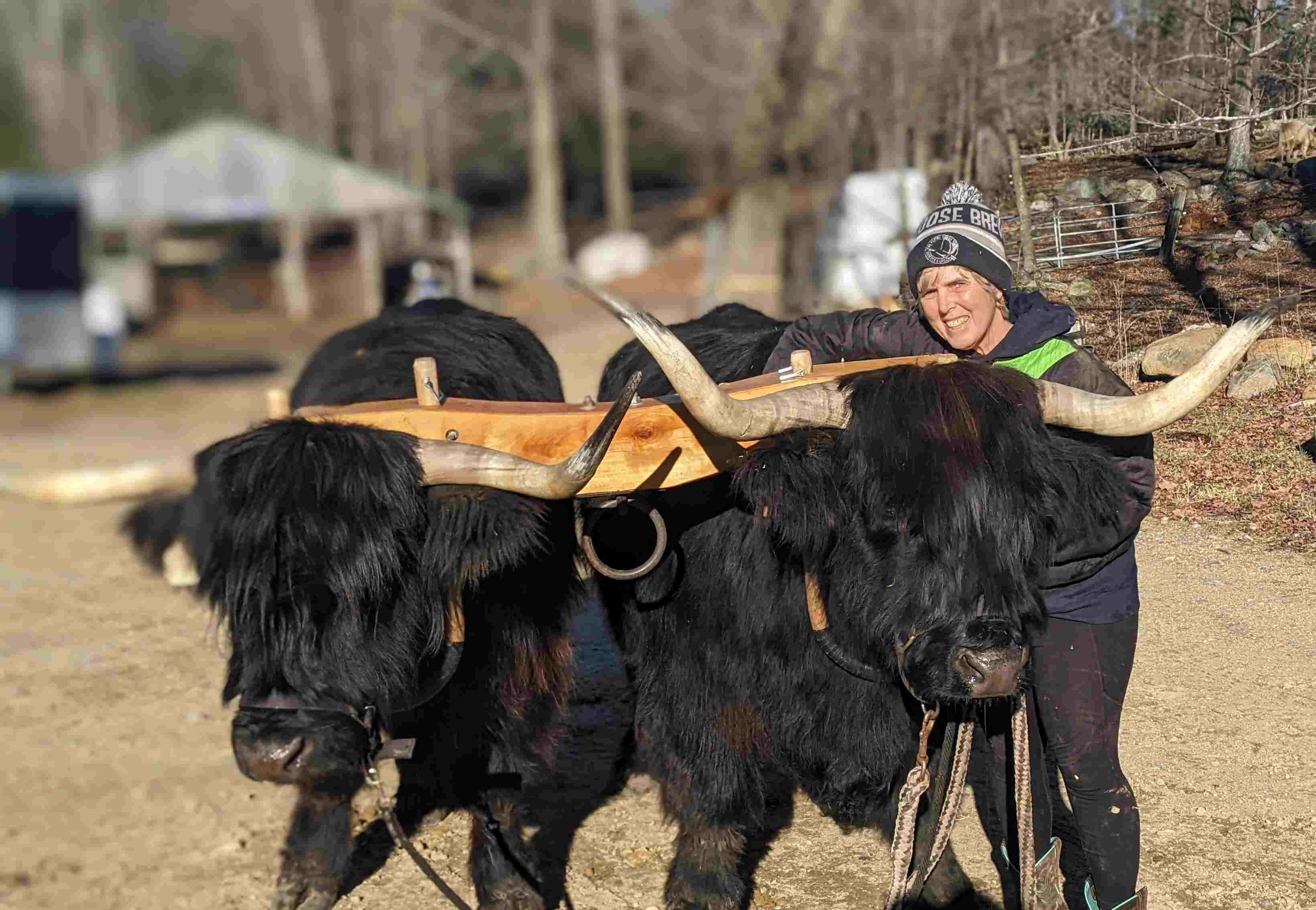It ain't the cold; it's the ice!
posted on
November 9, 2020

To get a drink, Barbie, the cow, pushed aside a ball in the trough that insulates the water from frigid winter air and helps keep the water from freezing.
As winter approaches, this farmer's annual war on ice is getting started. It might seem that a cattle farmer's first concern in winter would be keeping her cattle warm, but most cattle would laugh at the cold (if cows could laugh). As long as they have a place to shelter from bitter winds, most cows will stay warm.
Just like a snow-covered roof tells me a house is well-insulated, a snow-covered cow is a warm cow, thanks to its natural insulation – a layer of fat topped with a layer of lanolin-rich hair.
Cattle Drink Lots Of Water
But fat or thin, all of them need an astonishing amount of water to survive: 10 to 20 gallons per day! In my next life, I'll raise camels, but in this life, summer, and winter, it's all about the water. Cows can eat snow, but it has to be clean, untrampled, fluffy, and abundant: 30 to 40 pounds of it per day. But sometimes it doesn't snow, and that's why we don't depend on it.
Several years ago, with help from USDA matching funds, we installed automatic waterers in the pastures of Miles Smith Farm. Fed by a pipe buried below the frost line (4-5 feet deep), seven troughs are filled from the farm's well. While water is underground, natural geothermal heat keeps it from freezing, but it cools off above ground.
Weapons in the War on Ice
To keep the surface water from freezing, the troughs have a ball that acts like a storm door – shielding the water from cold air. The cows push the ball aside to drink. But when the weather is severe, the ball freezes in place, and the cows can't move it. On those days, husband Bruce and I perform a highly skilled task we call "Banging the Ball." With a booted foot, a board, or sometimes a sledgehammer, we'll break the ball loose from the icy hold.
More Weapons
Other weapons in our ice war are waterproof heaters that sit in the troughs. They are like heating elements you can use to make tea. Electricity is efficient when you make something spin, like a fan, but inefficient and costly when used to generate heat. So we use them sparingly.
Not all the troughs self-fill. We manually fill troughs for the pigs, chickens, ducks, and rabbits using buckets or hoses. Of course, hoses freeze, so don't be surprised if you see a hose piled up in the corner of our farm store.
Keeping my fingers from freezing is also a challenge, especially when I take off a glove to unscrew a frozen hose – and then I lose the glove. Is that why I have so many left-hand gloves?
The Battle is On
Sure, I dream of spending the cold months lounging by the fireside, sipping hot cocoa, and waiting for the mud and calves of springtime. But when New Hampshire is getting its weather from the North Pole, the ice battle is on, and the only important beverage is cold, clear water.



